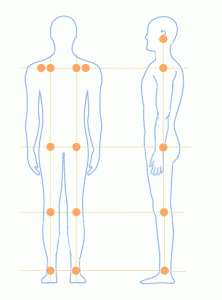Your posture and how you present yourself says more about your personality than you may realize. Besides making a bad impression, having poor posture can take a toll on your body. In fact, poor posture tends to cause a cascade of issues, in addition to reducing your flexibility. The imbalance of muscles and ligaments that result from poor posture can lead to more problems like:
- Chronic neck, back and shoulder pain
- Reoccurring knee, hip and foot problems
- Fatigue
- Digestion problems
- Difficulty breathing
- Carpal tunnel syndrome
- Fatigue
- Muscle stiffness
These structural flaws can hinder your ability to burn calories and build muscle. Even though having good posture is important, majority of people don’t do anything to improve it. As we spend more and more time during the day hunched over at the computer, it’s more important than ever for us to take time to stretch, in order improve our range of motion and posture. Correct alignment and good posture will help your muscles work more efficiently, increase your lifts and prevent pain or injuries.
In order to correct a posture problem, you first need to pinpoint where your postural deviations occur. Often poor posture occurs because the muscles surrounding a joint are imbalanced- one muscle will be too tight while the other will be weak. For example, if your shoulders tend to hunch forward, often that means you have tight pec muscles that are the cause. When muscle imbalances like this occur, stronger muscles must over compensate for weaker muscles, which is what causes tension, fatigue and discomfort.
The easiest and most effective way to correct your poor posture is by stretching muscles that are overactive while strengthening muscles that are underactive. If you notice in the above photo, the joints are evenly stacked. When you assess your own posture, you want to make sure your ears are over your shoulders, your ribs are over your hips and your hips are over your heel, while your pelvis and spine are in a neutral position.
In addition to strengthening any underactive muscles, static stretching at the end of your workout will help relax and reduce any muscle tension. Most importantly, keep at it and you will not only begin to notice changes but you will also feel better and improve your strengths.



